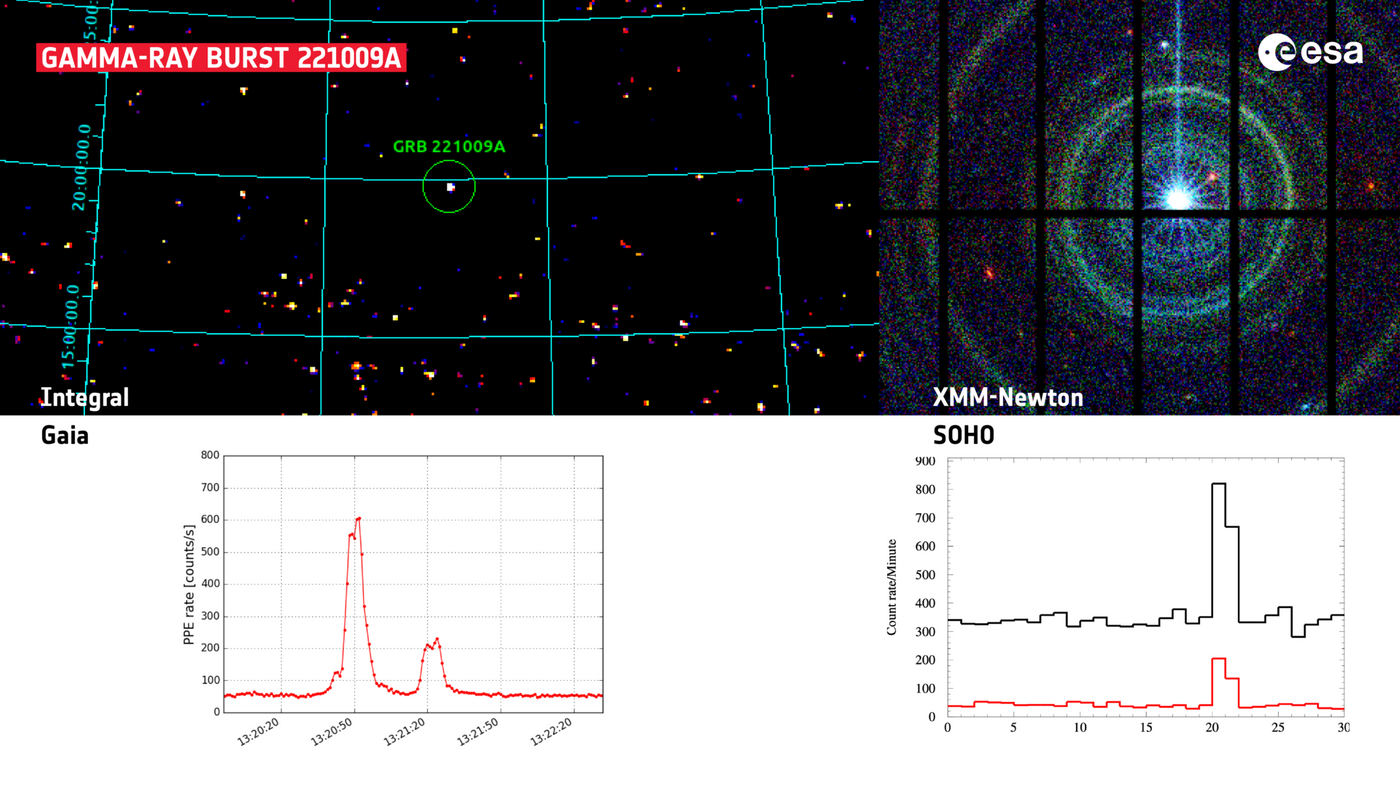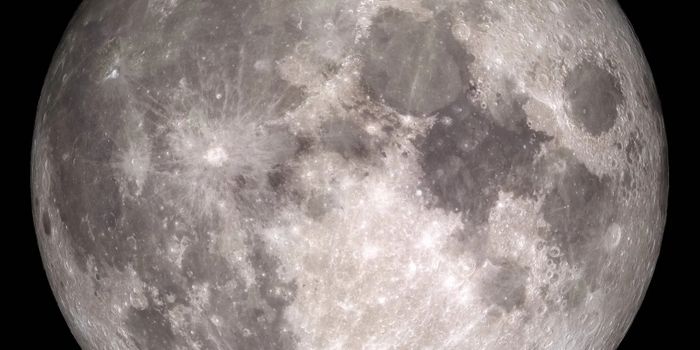Detection of the Brightest Gamma-Ray Burst Ever
On October 9, 2022, telescopes detected one of the brightest gamma-ray bursts ever! A gamma-ray burst (GRB) is an extremely energetic and bright explosion observed from distant galaxies and can last anywhere from milliseconds to hours. The initial burst of gamma-rays is usually accompanied by an afterglow that can last much longer than the initial burst, and emits longer wavelength light. The intense radiation from GRBs are believe to be released during the death of a high-mass star: the star goes supernova and implodes to become a neutron star or black hole.
This GRB is called GRB 221009A and it originated in the direction of the constellation Sagitta. The explosion occurred 1.9 billion years ago, which indicates the extreme distance at which this event occurred. The signal likely indicates the birth or formation of a black hole.
The signal GRB 221009A was picked up by many European Space Agency (ESA) observatories. These telescopes suddenly noticed a dramatic increase in their detection of high-energy radiation. The telescopes that did not originally detect the event were pointed towards it not long after.
Originally, the Solar and Heliospheric Observatory (SOHO) and the Gaia spacecraft detected the signal. The signal was picked up by the energetic particle detector EPHIN on the SOHO spacecraft and the non-star object counter in the Sky Mapper instrument on the Gaia spacecraft. The engineers were surprised at first by the strange signal, but soon realized what they had measured. On the image below, the two plots on the bottom show the graphical signal of the event detected by both Gaia and SOHO. On these plots, the vertical axes show the count of high-energy particles and the horizontal axes shows time. A clear peak is visible, which shows how dramatic and sudden the event was.
Images from Integral and XMM-Newton are also included on the above image. The upper left image was obtained by the IBIS/ISGRI instrument on the Integral spacecraft, and it shows the location of the burst on the sky as a source of powerful gamma-rays. This was a long-exposure image that was taken the day after the discovery and shows that the site was still active, even a day later! XMM-Newton was also pointed towards the location of the burst after its initial discovery. The XMM-Newton image shows the aftermath of the original GRB, which results in X-rays scattering off interstellar dust in our galaxy; this signal shows up as beautiful rings.
The Solar Orbiter and BepiColombo missions also detected the GRB. BepiColombo detected gamma-rays. Two instruments on the Solar Orbiter detected signals from the GRB: the STIX instrument and the EPD instrument. The STIX instrument detected X-rays from the burst, while the EPD detected energetic particles that were produced when the high-energy emission interacted with the spacecraft itself!
This GRB provided a unique opportunity: it allowed different ESA missions to come together to study the same astronomical event. This is an extremely rare occurrence, especially since some of these missions are designed to study our Solar System, not the distant Universe. This event shows the power of these telescopes and also how they can be used to study astronomical objects and events beyond their original missions.
Source: The European Space Agency









